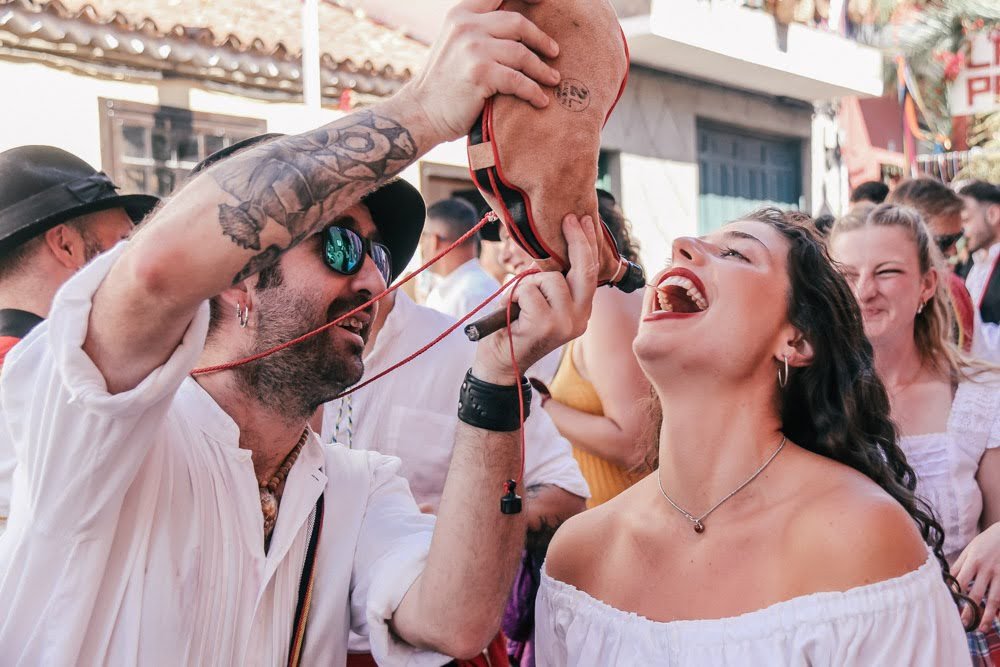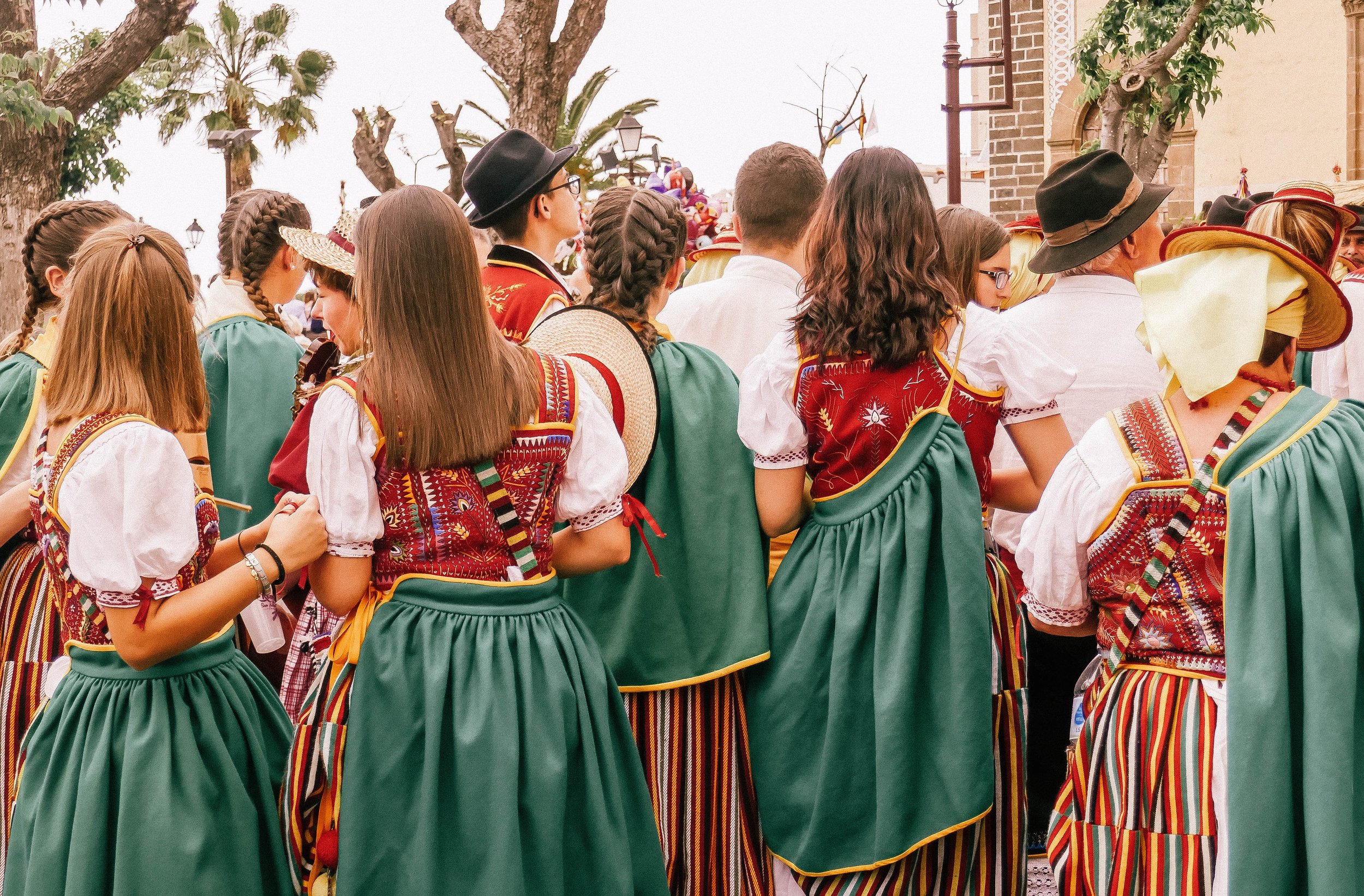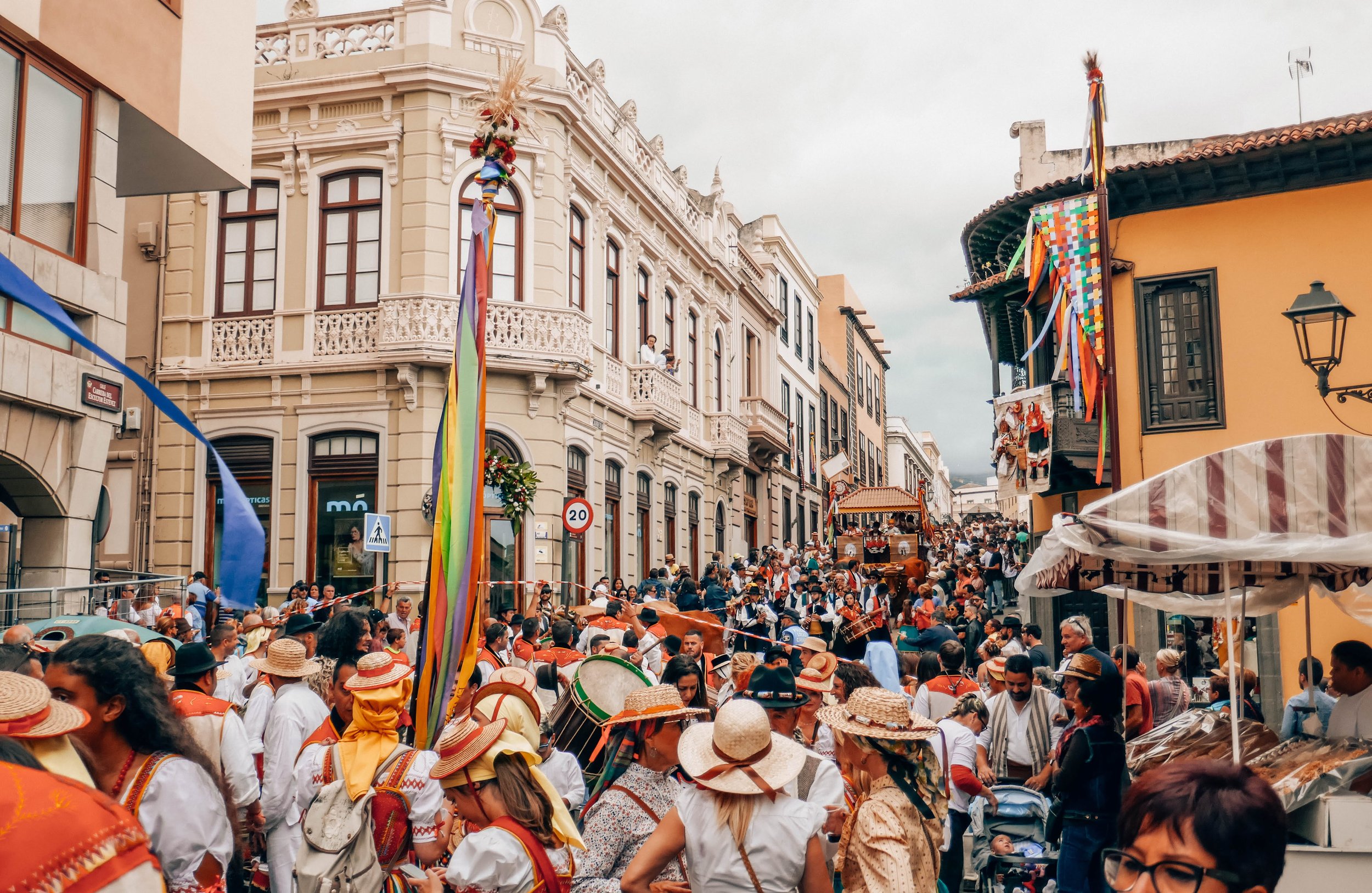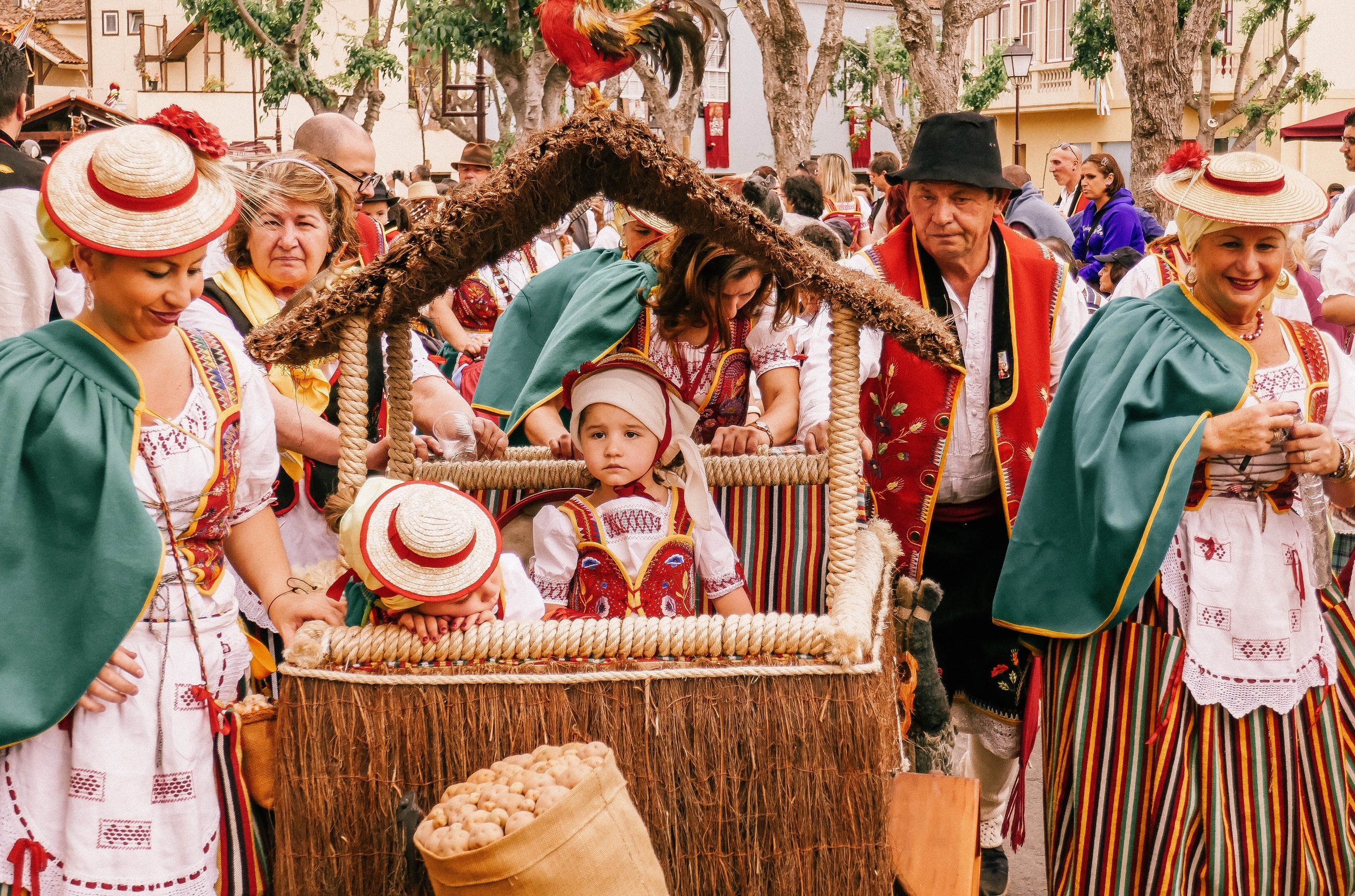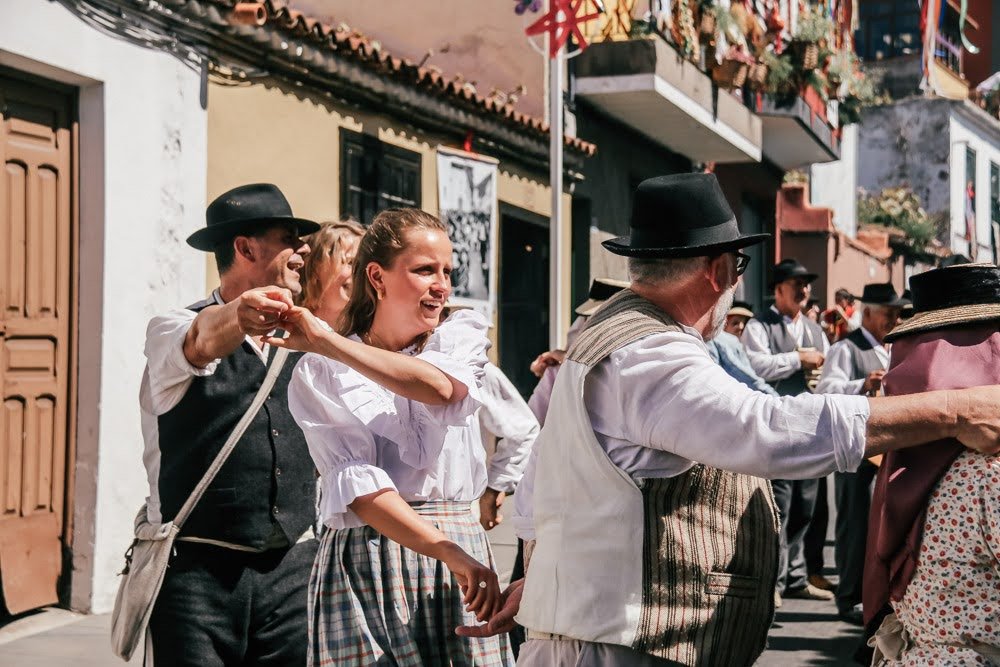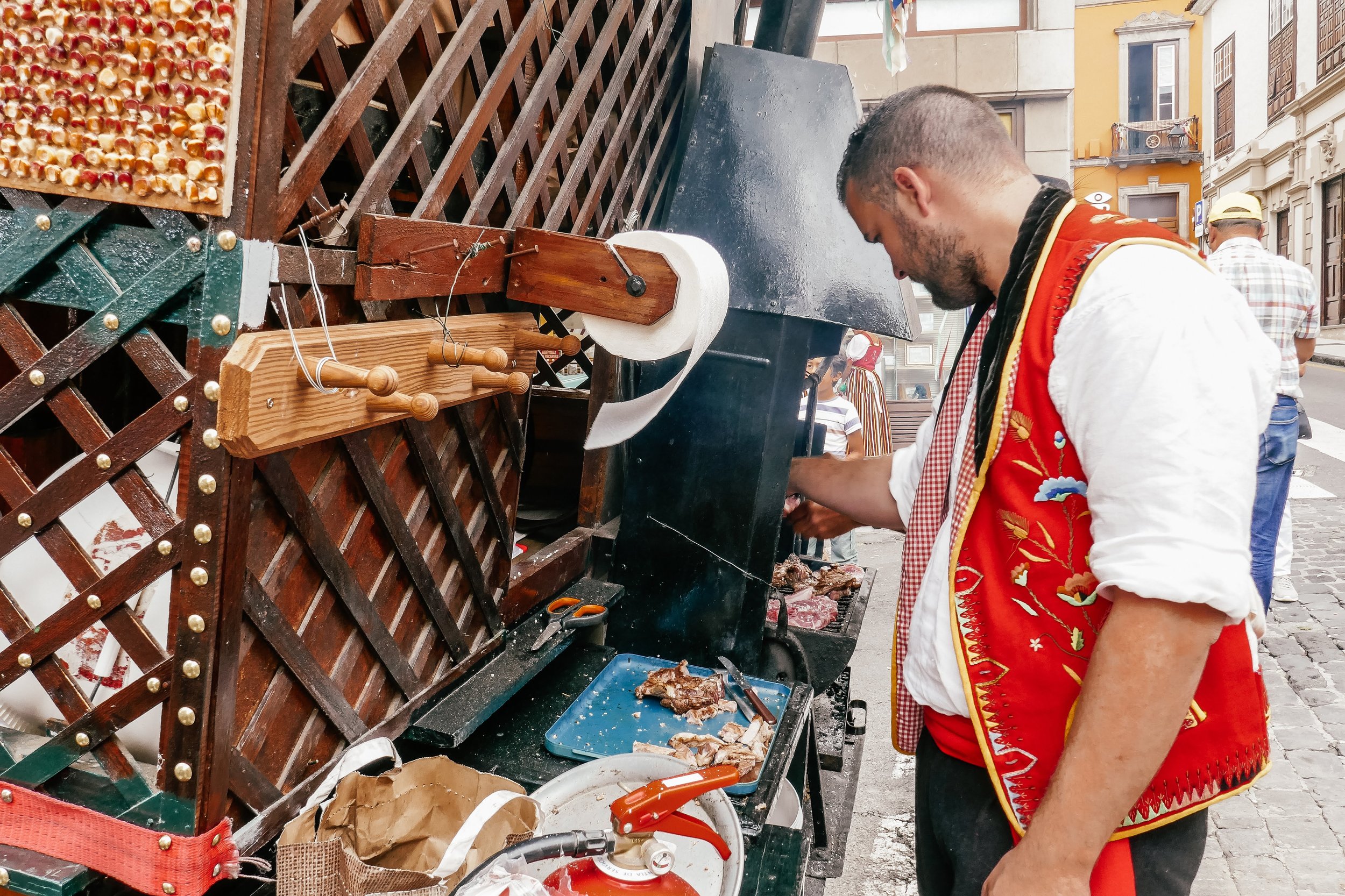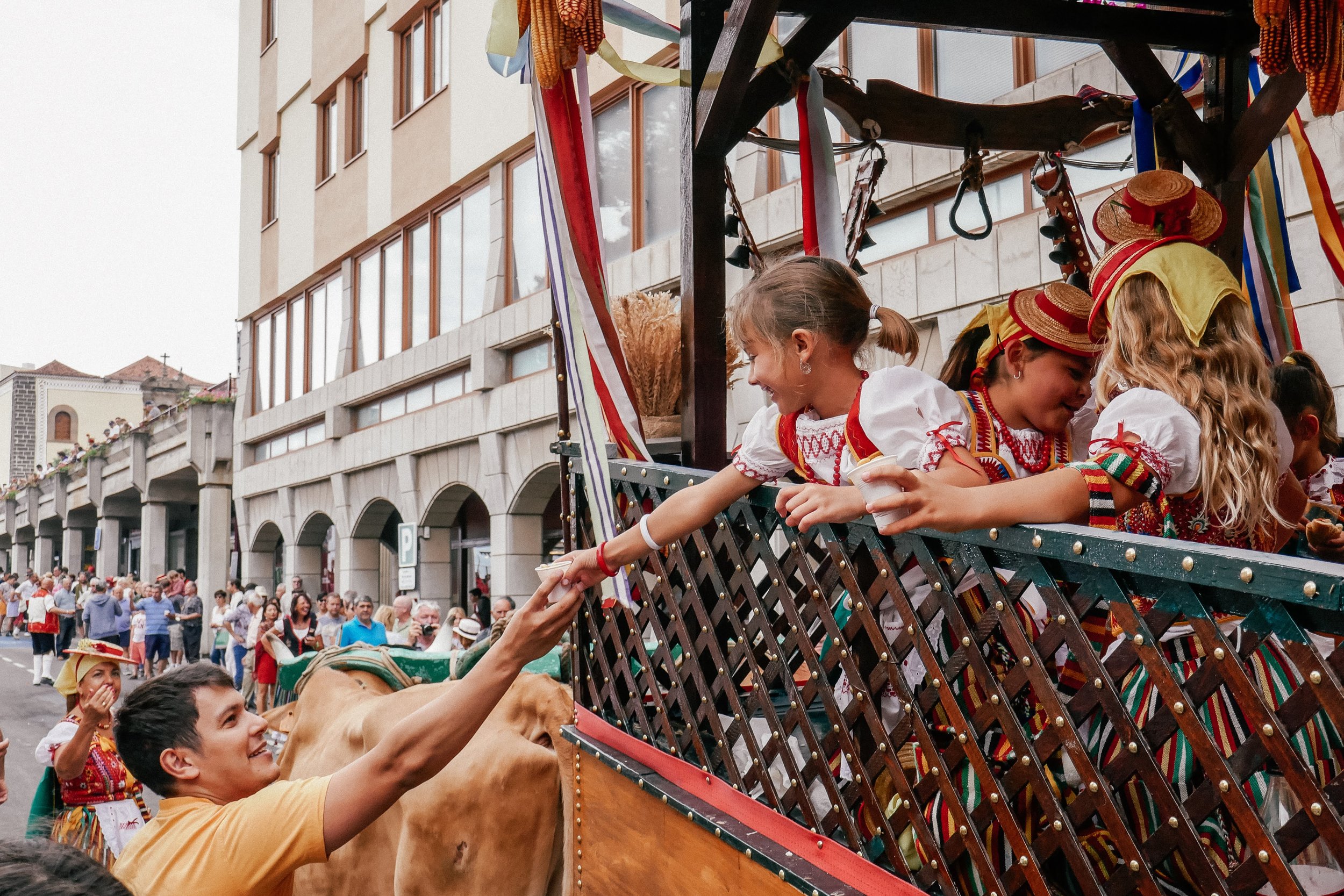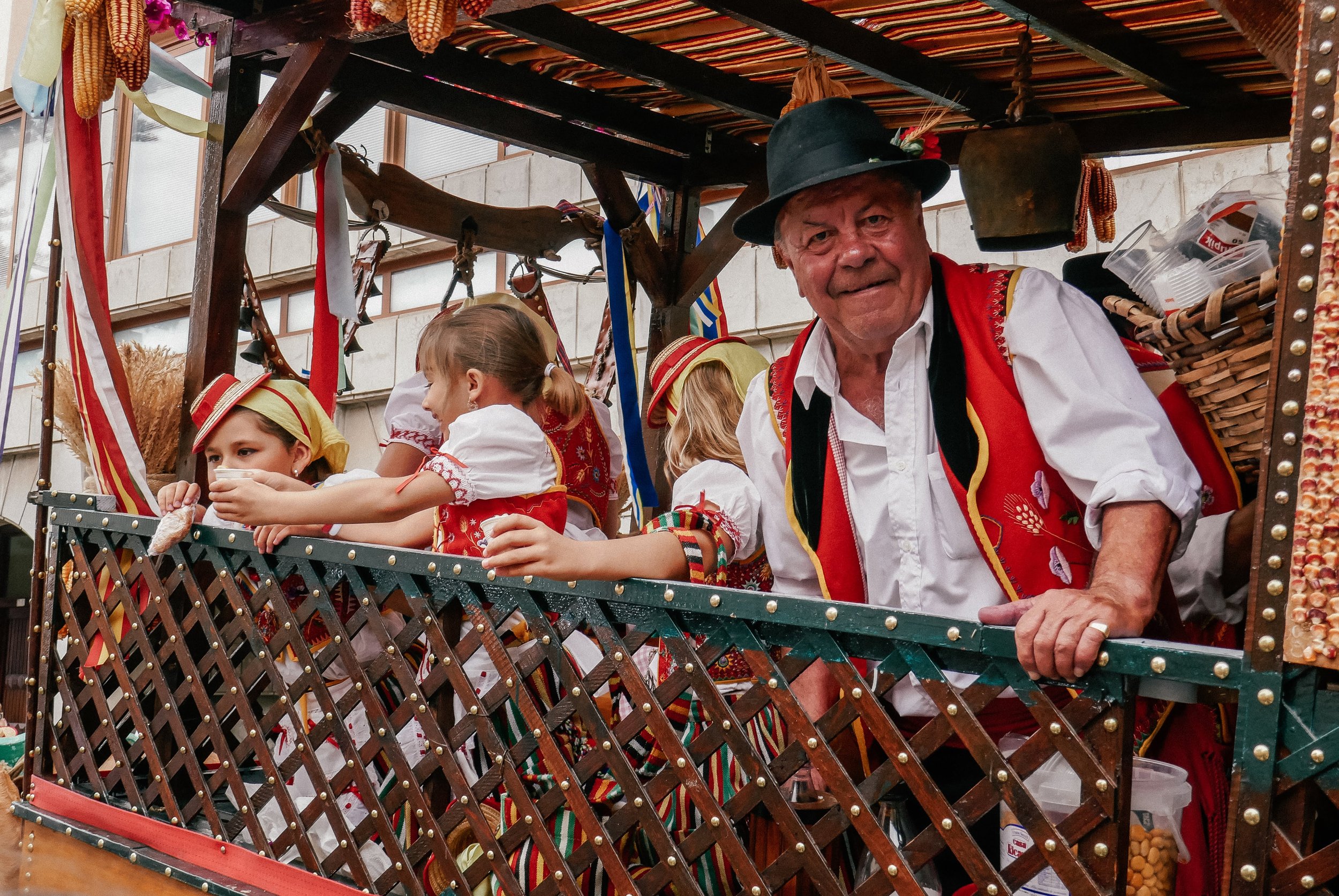Want the true local experience? A Digital Nomad's Guide to Romerías in Tenerife
Introduction:
The season of Romerias has started! Only last week our community joined the romeria in La Florida, a small village close to Nine. This super local and authentic experience made everyone so happy, that I decided to write a little guide on this special celebration. These festive processions offer a glimpse into Tenerife's historical roots, adorned with colorful costumes, lively music, and a sense of community spirit that is truly unique.
History of Romerías in Tenerife:
The origins of Romerías in Tenerife can be traced back to the island's deep-seated religious traditions and the historical context of the Spanish conquest. The word "Romería" itself is derived from the Spanish word "romero," meaning pilgrim. Initially, these events began as religious pilgrimages, where communities would come together to express their devotion and seek blessings for their crops, livestock, and overall well-being.
As Tenerife underwent significant changes during the Spanish colonization in the 15th century, the religious nature of the pilgrimages evolved into more elaborate and festive celebrations. The festivals became an opportunity for communities to express gratitude for a good harvest, pray for continued prosperity, and celebrate the island's unique cultural identity.
Over time, various towns and regions on the island developed their own distinctive Romerías, each influenced by the local customs, history, and patron saints. The fusion of religious devotion and cultural expression gave rise to the vibrant and colorful processions that characterize modern Romerías in Tenerife.
Throughout the centuries, Romerías have served as a reflection of Tenerife's socio-economic and cultural evolution. The festivals became occasions for communities to showcase their artistic skills, express regional pride, and strengthen social bonds. The costumes worn during these events, with their intricate details and vibrant colors, became symbolic representations of the island's diverse heritage.
As Tenerife transitioned from an agrarian society to a more modern economy, the significance of Romerías expanded beyond their agricultural roots. While maintaining their religious essence, these festivals now also serve as cultural showcases, attracting both locals and visitors who are eager to witness the unique blend of tradition and festivity.
Today, Romerías continue to play a vital role in preserving and celebrating Tenerife's cultural identity. The festivals serve as a living testament to the island's history, offering a dynamic and evolving expression of the people's faith, artistic talents, and collective spirit. As a digital nomad exploring Tenerife, participating in or witnessing a Romería provides a valuable window into the island's past, allowing you to connect with its rich cultural heritage in a truly immersive way.
WHAT TO EXPECT:
Expect to be one of the few tourist, specially in smaller towns. Which in our opinion, makes the whole experience extra special. If you can, dress up in a traditional outfit, just like the locals, and immerse yourself completely into the celebration. This includes a big parade of groups dancing, playing traditional music and caravans with food and wine. This celebration is all about sharing, so people will hand out potatoes, eggs, sweets, meet and wine. Standing on the sideline and enjoying the parade is fun, but make sure youu join the parade for at least a bit. Dance and sing with the locals, you will see they are more then exited to see you there.
In bigger towns, like La Orotava, these celebrations can get VERY big. Thousands of people will be on the street and the parade usually takes hours. At the end, there probably is a town square where everyone gathers and live bands will preform. This party goes on until late at night. People in Tenerife know how to party!
Romerías in Different Towns:
La Orotava: Our own home town, La Orotava is known for hosting one of the most iconic Romerías in Tenerife. Typically celebrated in June, this event is a visual spectacle set against the backdrop of the town's well-preserved historic center. The Romería in La Orotava is characterised by its lively procession, featuring decorated floats, traditional dances, and participants donning elaborate costumes. As a digital nomad, immersing yourself in the festivities of La Orotava provides a unique opportunity to witness the island's cultural richness.
Los Realejos: Los Realejos, a town with a strong agricultural heritage, celebrates its Romería in honor of San Isidro Labrador in May. The event is a vibrant display of Canarian traditions, featuring decorated ox-drawn carts, folk music, and locals adorned in colorful traditional attire. The Romería in Los Realejos offers a more intimate and authentic experience, allowing digital nomads to connect with the island's rural roots and the community's deep sense of identity.
Guimar: The town of Guimar hosts a lively Romería in honor of San Pedro, typically celebrated in June as well. Nestled in a region with a rich agricultural history, Guimar's festivities are characterised by vibrant processions, horse-drawn carriages, and enthusiastic locals dressed in traditional costumes. The fusion of religious reverence and cultural expression during Guimar's Romería provides a captivating experience for digital nomads seeking to understand the island's multifaceted heritage.
Valle de San Lorenzo: In the southern part of Tenerife, Valle de San Lorenzo boasts a unique Romería that showcases the cultural diversity of the island. This celebration, typically held in August, features a blend of traditional Canarian elements and influences from the southern regions. Digital nomads exploring Valle de San Lorenzo during this time will witness a more intimate and community-driven Romería, offering insights into the local way of life and cultural nuances distinct from other parts of Tenerife.
Exploring Romerías in these all very different towns allows you to appreciate the nuanced variations in customs, traditions, and local flavors that contribute to Tenerife's rich cultural mosaic. Whether it's the grandeur of La Orotava or the intimate community spirit in Valle de San Lorenzo, each Romería offers a unique perspective on the island's history and heritage.
Conclusion:
If you are looking for a deeper connection with Tenerife and the local community, attending a Romería is a must. These vibrant celebrations offer a sensory overload of colors, sounds, and traditions that transport participants to the heart of the island's history. Immerse yourself in the lively processions, witness the stunning costumes, and share in the communal spirit that defines Tenerife's Romerías – an experience that transcends time and bridges the gap between the island's past and present.
